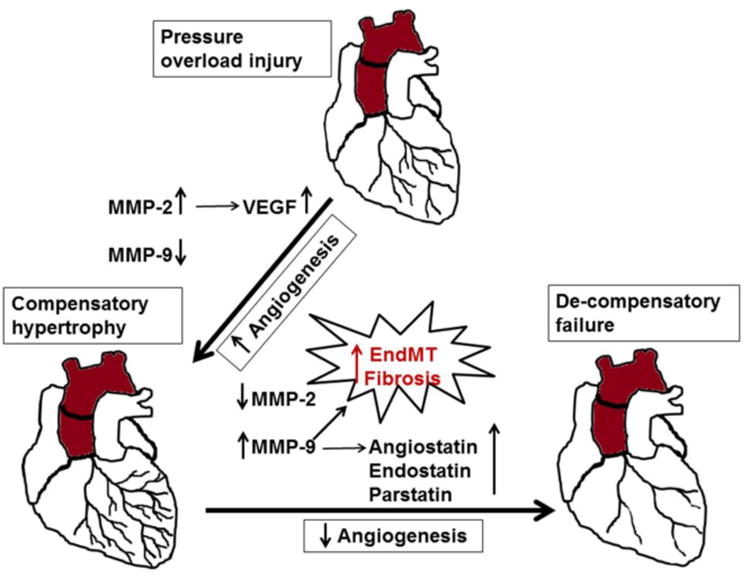Figure 3.

Mechanism of pressure overload (ascending aortic banding) mediated compensatory cardiac hypertrophy to de-compensatory heart failure. During early stages of aortic banding, angiogenesis is increased due to up-regulation of MMP-2, vascular endothelial growth factor (VEGF) and inhibition of MMP-9. However, sustained overload results in de-compensatory heart failure due to anti-angiogenesis, where expression of MMP-9 supersedes that of MMP-2 and promotes release of anti-angiogenic factors such as angiostatin, endostatin and parstatin. MMP-9 also stimulate endothelial mesenchymal transition (EndMT) leading to fibrosis and end stage heart failure.
